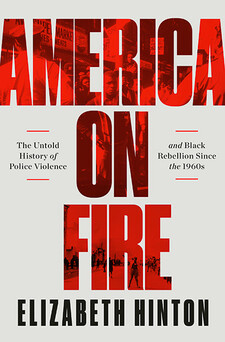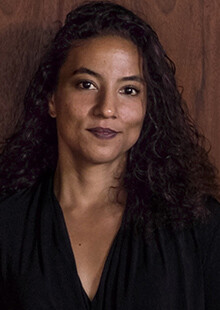Rebellion Through a New Lens

Local protests that began in Minneapolis in response to the murder of George Floyd in 2020 soon grew into a nationwide movement calling for the end of police brutality and systemic racism. In order to fully grasp the antiracist marches and rallies that took place across the country, Elizabeth K. Hinton writes in her book America on Fire: The Untold History of Police Violence and Black Rebellion Since the 1960s (W.W. Norton), one must look to their precursors in the 20th century, when Black rebellion in the U.S. — often mislabeled as “riots” — emerged as a powerful response to racism, poverty, and exclusion.
In the book, Hinton corrects the notion of so-called urban rioting as part of a disease that could only be cured by more police, a view expressed by politicians in the 1960s, including President Lyndon Johnson and Senator Daniel Patrick Moynihan.

Despite civil rights reforms and programs like Johnson’s War on Poverty, the rebellions showed the country that these efforts were not able to solve racial inequality. The War on Crime, launched a year after the War on Poverty, began as a short-term solution to expand law enforcement in communities of color through surveillance and increasingly militarized police. Such a system of American policing had its roots in the slave patrols of the South, Hinton writes. But it soon became a long-term reality.
In enacting new policing policies, federal policymakers neglected to listen to residents of communities affected by rebellions, as well as some of their own advisors, like Sargent Shriver and the Johnson-appointed Kerner Commission. Both issued warnings and alternatives to increased policing, like increased investment in poor Black communities.
At the same time, the U.S. government built a pipeline to take surplus weapons and technology from the Vietnam War and channel them to local law enforcement. In a massive investment, the Safe Streets Act of 1968 alone allocated $3 billion in today’s dollars for crime control across the country.

The second part of Hinton’s book traces the legacies of what Hinton calls the “crucible years” of rebellions as seen in the major televised moments of mass political violence in the last four decades, including in Miami in 1980, Los Angeles in 1992, and Cincinnati in 2001. Each occurred in response to an act of police violence, but Hinton writes that rebellion had evolved to be a community’s response only to “exceptional” acts of violence — a police killing like that of George Floyd. “There are no longer rebellions against everyday policing practices, a sign that the status quo has become accepted, however bitterly,” she writes.
Hinton reminds readers that “racial hierarchy, inequality, and violence are among the oldest American stories.” The rebellions of 2020 are part of an American legacy.
Hinton is Associate Professor in the Department of History and the Department of African American Studies at Yale, with a secondary appointment as Professor of Law at the Law School. Her research focuses on the persistence of poverty, racial inequality, and urban violence in the 20th century U.S.


